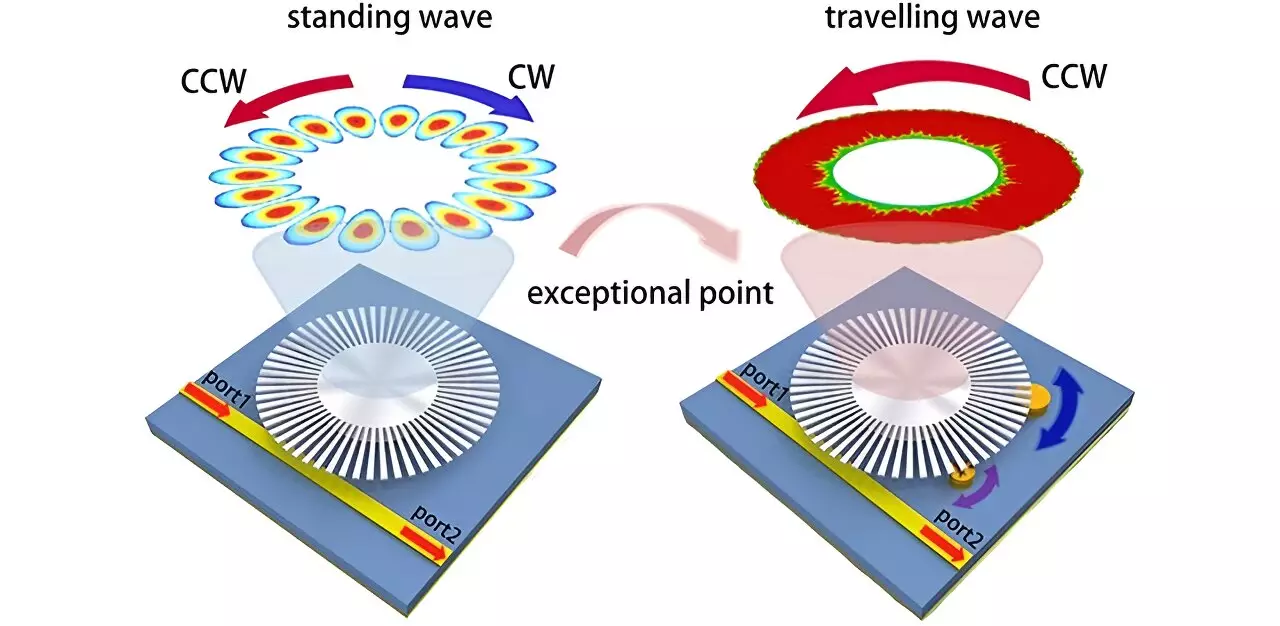Recent explorations in the realms of photonics and materials science have led to extraordinary breakthroughs in sensor technologies that transcend the traditional boundaries of detection. This surge of innovation comes at a crucial time when the scientific community is constantly seeking more precise and adaptable methods to analyze various types of materials and particles. Notably, the field of non-Hermitian physics has gained prominence, revealing new possibilities for manipulating light and significantly enhancing the responsiveness of sensor systems.
Exceptional Points: A New Dimension of Sensitivity
A pivotal study highlighted in *Advanced Photonics Nexus* uncovers a groundbreaking sensor design that incorporates exceptional points (EPs) to reach sensational levels of sensitivity. Exceptional points represent unique spectral characteristics where both eigenvalues and their eigenvectors merge, offering unprecedented capabilities for optical sensors. Traditional EP-based devices, like whispering gallery mode microtoroids, have indeed shown increased sensitivity; however, they are often encumbered by certain limitations. Primarily, the fixed nature of their EPs post-manufacturing presents challenges for precise adjustments, restricts the operational range, and hinders their ability to efficiently detect minute particles.
The newly proposed sensor overcomes these challenges through the innovative use of a single spoof localized surface plasmon (LSP) resonator. This unique architecture allows for a dynamic and reconfigurable behavior that simulates localized surface plasmons while offering the flexibility that traditional designs lack. Positioned strategically above a microstrip line and coupled with adjustable Rayleigh scatterers, this setup paves the way for real-time reconfigurations of EP states across a broader frequency spectrum. This adaptability not only makes the sensor more resilient to manufacturing inconsistencies but also enhances its capabilities for detecting particles smaller than previously conceivable.
Key Features Driving the Sensor’s Performance
The introduction of adjustable Rayleigh scatterers stands as a significant advancement, enabling not only the dynamic creation and reshaping of EPs but also enhancing the overall precision and malleability of the sensor’s functionality. Furthermore, by confining electromagnetic fields to the resonator’s surface, the sensor amplifies its sensitivity to any perturbations caused by surrounding particles. The ability to excite multiple plasmonic modes is another noteworthy feature, extending the operational bandwidth and detection capabilities of the device.
This groundbreaking research represents a paradigm shift in sensor technology, allowing detection of particles as minute as 0.001 times the wavelength of light. The implications of this advancement are profoundly promising, unveiling exciting opportunities for a plethora of applications ranging from scientific research to industrial processes. As researchers continue to refine these technologies, the potential for improved analytics and details at the microscopic level triggers thoughts of what tomorrow’s sensors might accomplish in unraveling the complexities of the natural world.


Leave a Reply